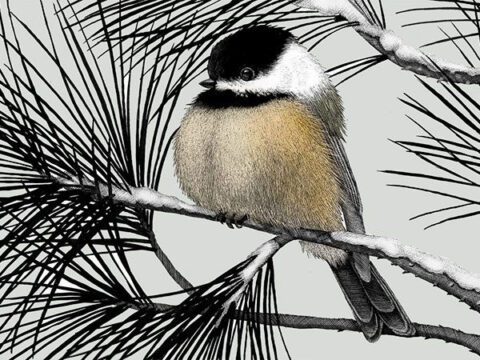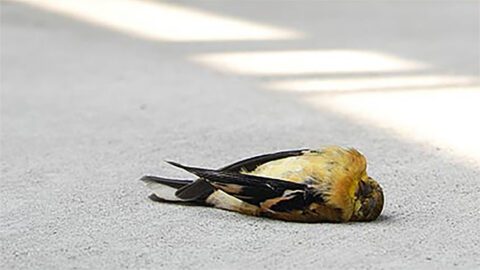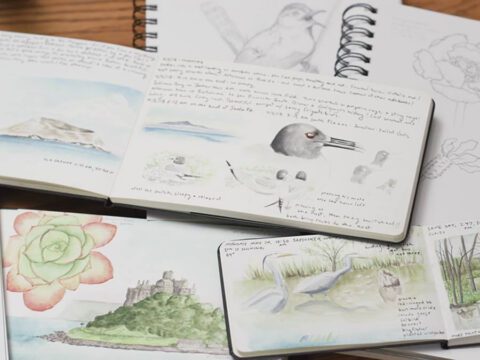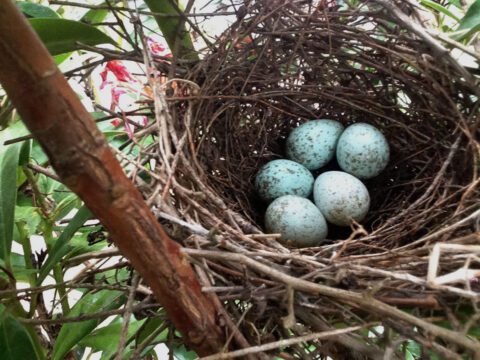Live from the 2010 Ornithological Conference in San Diego
By Tim Gallagher
February 9, 2010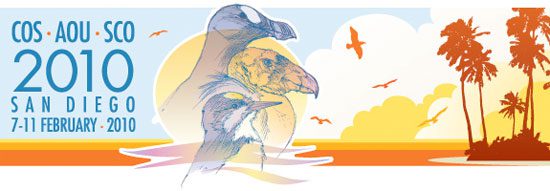
It’s time for another annual meeting of the American Ornithologists’ Union. Just like last year in Philadelphia and 2009 in Portland, we’ll be bringing you stories from the floor of the meeting, where hundreds of ornithologists have gathered for four days of intense science.
First up is Living Bird editor Tim Gallagher to report on Monday’s plenary talk, given by University of Montana’s Ken Dial. Over the past decade, Dial and his collaborators have proposed a surprising new theory about how birds first began to fly. And with a wicked snowstorm shutting down air travel back East, the evolution of flight seemed perhaps the perfect topic. –Hugh Powell
The 128th annual meeting of the American Ornithologists’ Union (which this year is a joint meeting with the Cooper Ornithological Society and the Society of Canadian Ornithologists) got off to a slightly bumpy start Monday morning at 8:00 a.m. It seems the first plenary speaker, Scott Derrickson of the Smithsonian’s National Zoological Park, got stuck in the snowstorm blanketing Washington, D.C., and couldn’t make it to San Diego last night.
Not to be stymied by a little thing like inclement weather, the AOU leadership pivoted instantly and asked Kenneth P. Dial of the University of Montana to present his scheduled Tuesday morning plenary 24 hours early.
Now, for many people, having to deliver a talk a day early can be horrendous. There you are, expecting to have all this extra time to prepare and practice, but instead you just have to get up and go at a moment’s notice. Fortunately, Dial was more than up to the challenge. With his exuberant personality, a sense of humor and comic timing as well honed as most stand-up comedians, and a boundless passion for his topic of study, he presented his hypotheses on the evolution of flight in birds. In the process, he took on 150 years of entrenched dogma.
Dial began his talk by apologizing for not having time to dress up and get his hair done for the talk. (He was clad in blue jeans and a sweater and has a shaved head.) Then he launched into his talk, exploring whether bird flight had an arboreal (trees-down) or a terrestrial (ground-up) origin. The long-accepted belief has been that birds originated in the trees, but Dial takes on this idea, presenting a compelling array of data to support his view that flight originated from the ground up.
Others have pointed out that some feathered dinosaurs had tiny wings, much too small to be used in flight. Why is that? Were they just useless appendages? Or did they help vulnerable young dinosaurs to scramble up inclines to escape predators.
Dial has looked at numerous species of fledgling birds—tinamous, megapodes, brush-turkeys, chukars, swifts, pigeons, owls, and more—and has documented this kind of “wing-assisted incline running” in all of them. The young birds use their stubby wings to help them gain traction as they run up the side of a tree or other incline and also to flutter back down to the ground safely. Could this have been how flight originated—at first as a way for a fledgling to escape predators?
At the University of Montana’s Flight Laboratory, Dial uses high-speed x-rays to explore flight in adult birds as well as the mechanisms by which fledglings scramble up inclines—some at a 90-degree angle. (You can watch slow-motion videos of birds flying in wind tunnels.) One could easily imagine an Archaeopteryx making a similar ascent before diving off the end of a branch and gliding downward again.
Ken Dial ended his talk with a plea to ornithologists to always be open to new ideas in their research and especially in their teaching of young scientists. Whether or not you agree with his hypotheses (and he perhaps left the audience with more questions than answers), this felt like the perfect kind of rousing, fascinating discussion to get a meeting going. You could see it in the eyes of the students as they left the ballroom and walked downstairs for the coffee break.

All About Birds
is a free resource
Available for everyone,
funded by donors like you
American Kestrel by Blair Dudeck / Macaulay Library

